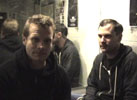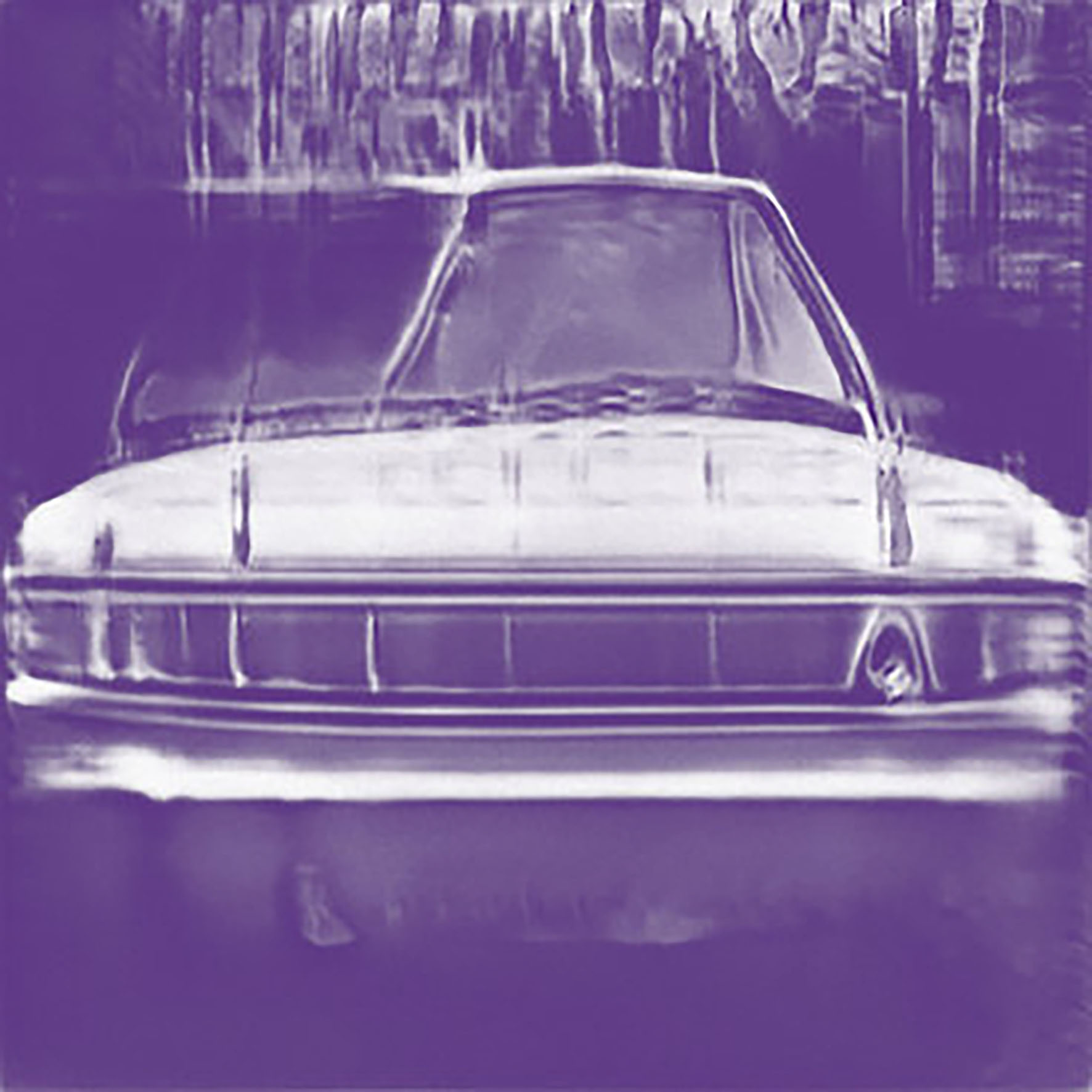 It is not quite accurate to say that Saint Abdullah completely reinvent their sound with each new album, but is fair to say that Mehdi and Mohammad Mehrabani-Yeganeh are far more interested to exploring meaningful new territory than with building upon their past successes. While that is certainly an admirable trait, it can also be a frustrating one, as I know Saint Abdullah will probably never fully return to the more industrial-indebted aesthetic of their earlier albums (which I love). On the bright side, that also means that every new Saint Abdullah album has the potential to blindside me with a bold leap forward into previously uncharted creative territory. In that regard, Inshallahlaland falls a bit short of being a particularly revelatory album as a whole, yet it does explore some characteristically intriguing and thoughtful themes and features quite a fascinating longform piece ("Glamour Factory"). For me, the appeal of Inshallahlaland begins and ends there, but that one excellent 20-minute sound collage is enough to make the album a significant release that fans will not want to pass over.
It is not quite accurate to say that Saint Abdullah completely reinvent their sound with each new album, but is fair to say that Mehdi and Mohammad Mehrabani-Yeganeh are far more interested to exploring meaningful new territory than with building upon their past successes. While that is certainly an admirable trait, it can also be a frustrating one, as I know Saint Abdullah will probably never fully return to the more industrial-indebted aesthetic of their earlier albums (which I love). On the bright side, that also means that every new Saint Abdullah album has the potential to blindside me with a bold leap forward into previously uncharted creative territory. In that regard, Inshallahlaland falls a bit short of being a particularly revelatory album as a whole, yet it does explore some characteristically intriguing and thoughtful themes and features quite a fascinating longform piece ("Glamour Factory"). For me, the appeal of Inshallahlaland begins and ends there, but that one excellent 20-minute sound collage is enough to make the album a significant release that fans will not want to pass over.
According to the Iranian-raised Mehrabani-Yeganeh brothers, the central themes of their latest release are: 1) how society is less-than-accepting of people with multiple identities, and 2) how we connect with human voices on a uniquely deep level (even when they appear in sampled and deconstructed form).  Both themes are particularly prominent in the opening "Glamour Factory," which borrows part of a speech by "one of Iran's pre-eminent film voiceover artists" about how working in film allowed him to break free of society's deeply ingrained identity prejudices to some degree. Unsurprisingly, that sentiment resonated deeply with the brothers, as they are attempting to achieve a similar liberation through their own work. Also, they drolly note that it "felt fitting to sample the ultimate sampler." That speech proves to merely be a starting point, however, as "Glamour Factory" mostly makes me feel like I am channel surfing Iranian TV on hallucinogens, as it is freewheeling, psychotropic swirl of sampled voices, looped fragments of songs, and street noise that fitfully plunges into passages of wild manipulations, distortions, and stammering edits. In fact, it almost feels like someone pressed a collection of television snippets to vinyl, then handed it off to a avant-garde-minded turntablist for the full chopped and screwed treatment, though there are also some beautifully minimal or melodic passages thrown into the mix too (as well as some flashes of dark humor celebrating "the benefits of mechanized civilization"). If "Glamour Factory" had been stretched out to consume the entire album, I would probably proclaim Inshallahlaland to be an unambiguous triumph, but it is instead rounded out by three shorter pieces of varying quality. My favorite of the lot is "Blurring Of Management Theory," which deftly combines a shivering and shimmering melodic theme with an endlessly shifting backdrop of clicks, pops, squelches, and subdued rumble. It is admittedly more of a snack than a meal though and I remain perplexed by the brothers' love of bloopy synth improvisations exhibited on the other pieces. That said, the successes of Saint Abdullah continue to delight me even if their hit-to-miss ratio is less than ideal, as this project is an endearingly personal, unpredictable, and playfully outré one quite unlike anything else.
sounds can be found here


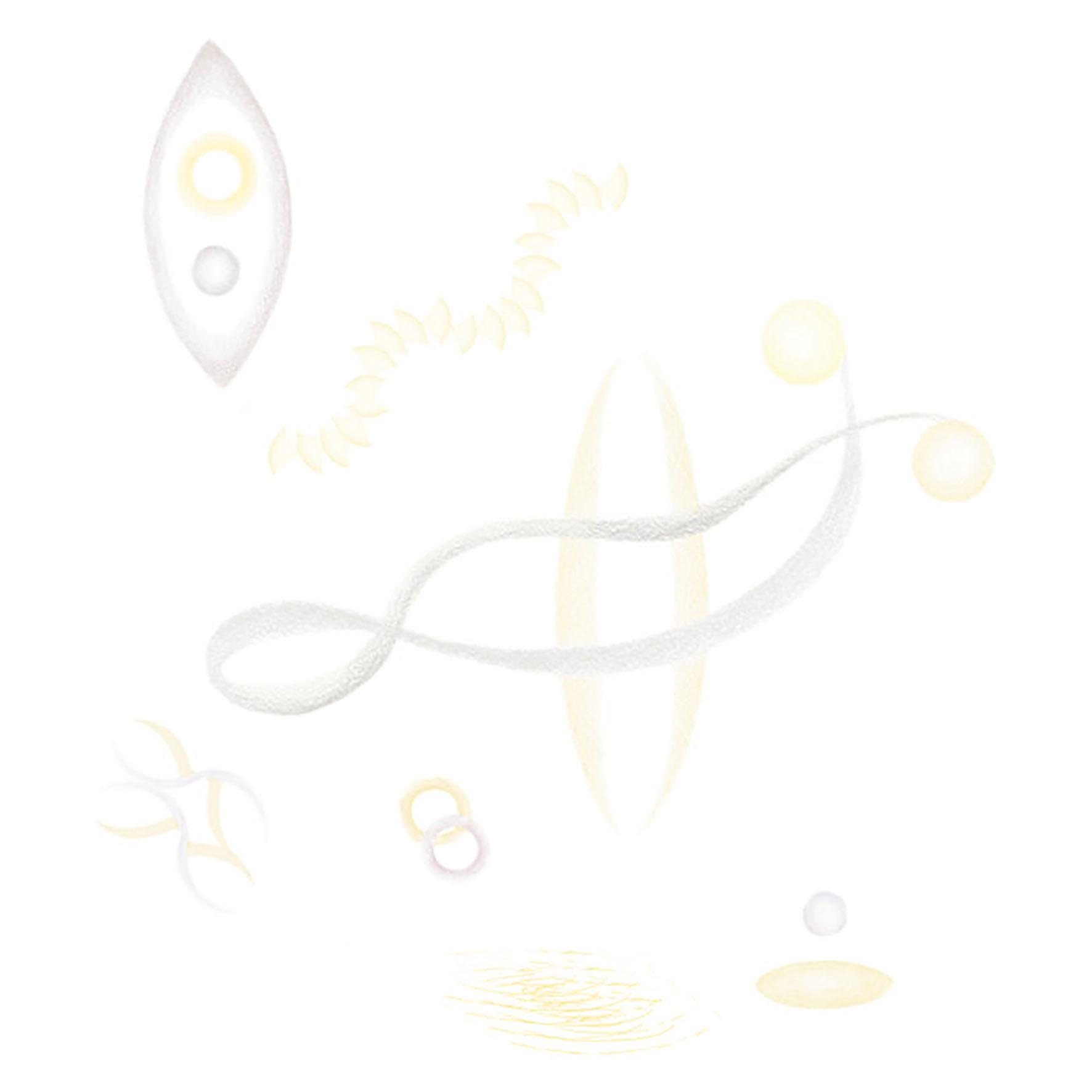 This Krakow-based composer's debut album was one of 2021's most pleasant late-year surprises, as Making Eye Contact With Solitude is a gorgeously warm and intimate gem of multilayered and masterfully textured psychedelia. Basta describes the album as a diaristic meditation on "domesticity, loneliness, repetitiveness, stubborn patterns of isolated minds and the sonic mysteries all around us" and cites the murderers' row of Cucina Povera, Félicia Atkinson, and claire rousay as key inspirations. While welcome shades of all three artists are certainly evident to some degree on these six songs, Basta's aesthetic already feels fully formed and distinctively her own. In fact, I suspect it will not be long at all before Basta regularly finds herself name-checked as an inspiration by other artists, as her unhurried and dreamlike phantasmagoria of rippling zithers, vividly textured field recordings, and enigmatic domestic sounds feels absolutely revelatory on the album's two strongest pieces.
This Krakow-based composer's debut album was one of 2021's most pleasant late-year surprises, as Making Eye Contact With Solitude is a gorgeously warm and intimate gem of multilayered and masterfully textured psychedelia. Basta describes the album as a diaristic meditation on "domesticity, loneliness, repetitiveness, stubborn patterns of isolated minds and the sonic mysteries all around us" and cites the murderers' row of Cucina Povera, Félicia Atkinson, and claire rousay as key inspirations. While welcome shades of all three artists are certainly evident to some degree on these six songs, Basta's aesthetic already feels fully formed and distinctively her own. In fact, I suspect it will not be long at all before Basta regularly finds herself name-checked as an inspiration by other artists, as her unhurried and dreamlike phantasmagoria of rippling zithers, vividly textured field recordings, and enigmatic domestic sounds feels absolutely revelatory on the album's two strongest pieces.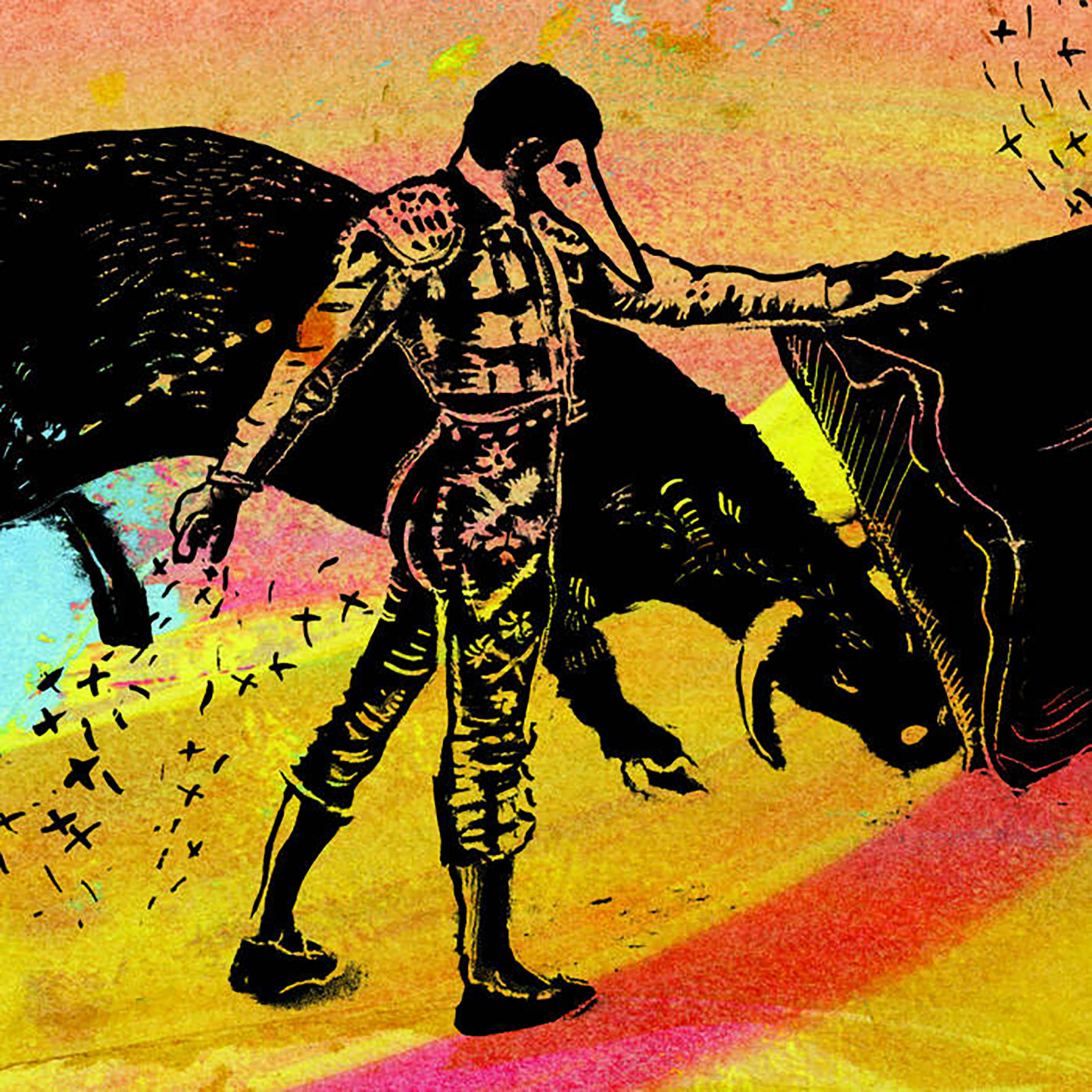 I was not expecting 2014's odds n' ends collection Fight for Your Dinner to ever have a sequel, so this latest batch of eclectic covers, one-off experiments, unusual collaborations, and orphaned songs came as a very pleasant New Year's Eve surprise last December. While the covers are a bit less leftfield this time around (no Missy Elliott), they compensate by being even better, as the duo's sublime interpretation of two '80s Prince classics is one of the best goddamn things that they have ever recorded. The album also features one hell of an excellent tribute to the late Jack Rose, reworkings of songs by Pixies and Amon Düül II, a homemade electronics experiment, and a six-year-old's bold vision for the perfect pop song. Given the album's freewheeling randomness and the focus upon previously unreleased pieces, one could be forgiven for thinking that Fight For Your Dinner II is strictly one for the band's most devout fans, but it is extremely rare for Big Blood to release anything that does not feature at least one absolutely essential song and this one has several (as well as some great cover art). Of course, I am admittedly speaking as one of the aforementioned "most devout fans," but I still believe it is an objective fact that there is an impressive amount of revelatory material here. And that anyone left cold by the "When Doves Cry/I Would Die For You" cover should be extremely concerned that their ears may be broken.
I was not expecting 2014's odds n' ends collection Fight for Your Dinner to ever have a sequel, so this latest batch of eclectic covers, one-off experiments, unusual collaborations, and orphaned songs came as a very pleasant New Year's Eve surprise last December. While the covers are a bit less leftfield this time around (no Missy Elliott), they compensate by being even better, as the duo's sublime interpretation of two '80s Prince classics is one of the best goddamn things that they have ever recorded. The album also features one hell of an excellent tribute to the late Jack Rose, reworkings of songs by Pixies and Amon Düül II, a homemade electronics experiment, and a six-year-old's bold vision for the perfect pop song. Given the album's freewheeling randomness and the focus upon previously unreleased pieces, one could be forgiven for thinking that Fight For Your Dinner II is strictly one for the band's most devout fans, but it is extremely rare for Big Blood to release anything that does not feature at least one absolutely essential song and this one has several (as well as some great cover art). Of course, I am admittedly speaking as one of the aforementioned "most devout fans," but I still believe it is an objective fact that there is an impressive amount of revelatory material here. And that anyone left cold by the "When Doves Cry/I Would Die For You" cover should be extremely concerned that their ears may be broken. This latest release from Mogard is something of a modest one, as he describes it as "the result of experimentation with familiar and less familiar instruments available to me in the studio between 2019 and 2022." No further information is divulged about the album's "less familiar" elements aside from an interesting mention of reverb borrowed from the Inchindown oil tanks, which apparently hold the world record for longest reverberation time. If In a Few Places Along the River were a Lea Bertucci or Pauline Oliveros album, that expansive reverb would no doubt be a defining feature, but it seems like Mogard harnessed it in an more unusual and inventive way. The results are admittedly not quite top-tier Mogard (this is a digital-only release, after all), as this album captures him in stark, slow-burning drone mode rather than one of his more melodic and warm moods, but it is still solid enough to be satisfying, as the two bookends are impressively nuanced and substantial.
This latest release from Mogard is something of a modest one, as he describes it as "the result of experimentation with familiar and less familiar instruments available to me in the studio between 2019 and 2022." No further information is divulged about the album's "less familiar" elements aside from an interesting mention of reverb borrowed from the Inchindown oil tanks, which apparently hold the world record for longest reverberation time. If In a Few Places Along the River were a Lea Bertucci or Pauline Oliveros album, that expansive reverb would no doubt be a defining feature, but it seems like Mogard harnessed it in an more unusual and inventive way. The results are admittedly not quite top-tier Mogard (this is a digital-only release, after all), as this album captures him in stark, slow-burning drone mode rather than one of his more melodic and warm moods, but it is still solid enough to be satisfying, as the two bookends are impressively nuanced and substantial.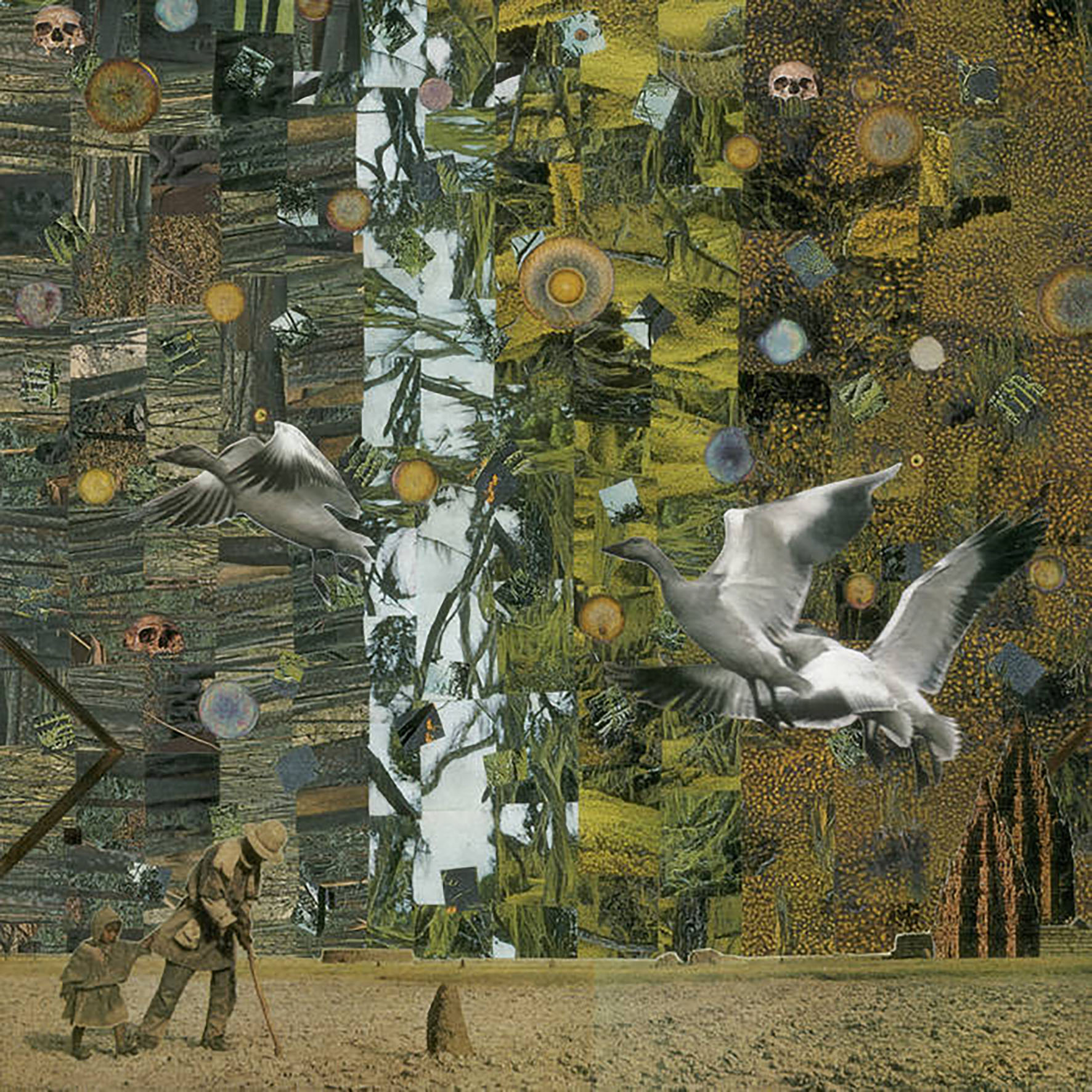 This latest double album from the California-based Fritch is something of a culmination of two separate long journeys, as it took eight misfortune-filled years to complete and it also concludes Lost Tribe's "Built Upon a Fearful Void" series. While I am not necessarily sure that Fritch himself would agree that the end result was worth suffering through the gauntlet of lost hard drives and water-damaged tape reels that he had to navigate to get to this point, Built Upon a Fearful Void nevertheless meets my dauntingly high expectations for any major new statement from the composer. That said, I am certainly curious about how much the album changed between the ruined tape reels and Fritch's decision to abandon "what remained of the salvaged material" and "rerecord the album entirely using only faint flickers of the old tapes and cassettes." On one hand, some magic simply cannot be recaptured, yet that loss is balanced by the fact that Fritch's work seems to only get better and better with each passing year. In any case, anyone who fell in love with Fritch's work from 2019's Deceptive Cadence will likely love this album too (particularly its first half), as Built Upon a Fearful Void is another impossibly rich and vivid plunge into a dreamlike and cinematic vision of bittersweet Americana (and some other very likable other things as well).
This latest double album from the California-based Fritch is something of a culmination of two separate long journeys, as it took eight misfortune-filled years to complete and it also concludes Lost Tribe's "Built Upon a Fearful Void" series. While I am not necessarily sure that Fritch himself would agree that the end result was worth suffering through the gauntlet of lost hard drives and water-damaged tape reels that he had to navigate to get to this point, Built Upon a Fearful Void nevertheless meets my dauntingly high expectations for any major new statement from the composer. That said, I am certainly curious about how much the album changed between the ruined tape reels and Fritch's decision to abandon "what remained of the salvaged material" and "rerecord the album entirely using only faint flickers of the old tapes and cassettes." On one hand, some magic simply cannot be recaptured, yet that loss is balanced by the fact that Fritch's work seems to only get better and better with each passing year. In any case, anyone who fell in love with Fritch's work from 2019's Deceptive Cadence will likely love this album too (particularly its first half), as Built Upon a Fearful Void is another impossibly rich and vivid plunge into a dreamlike and cinematic vision of bittersweet Americana (and some other very likable other things as well).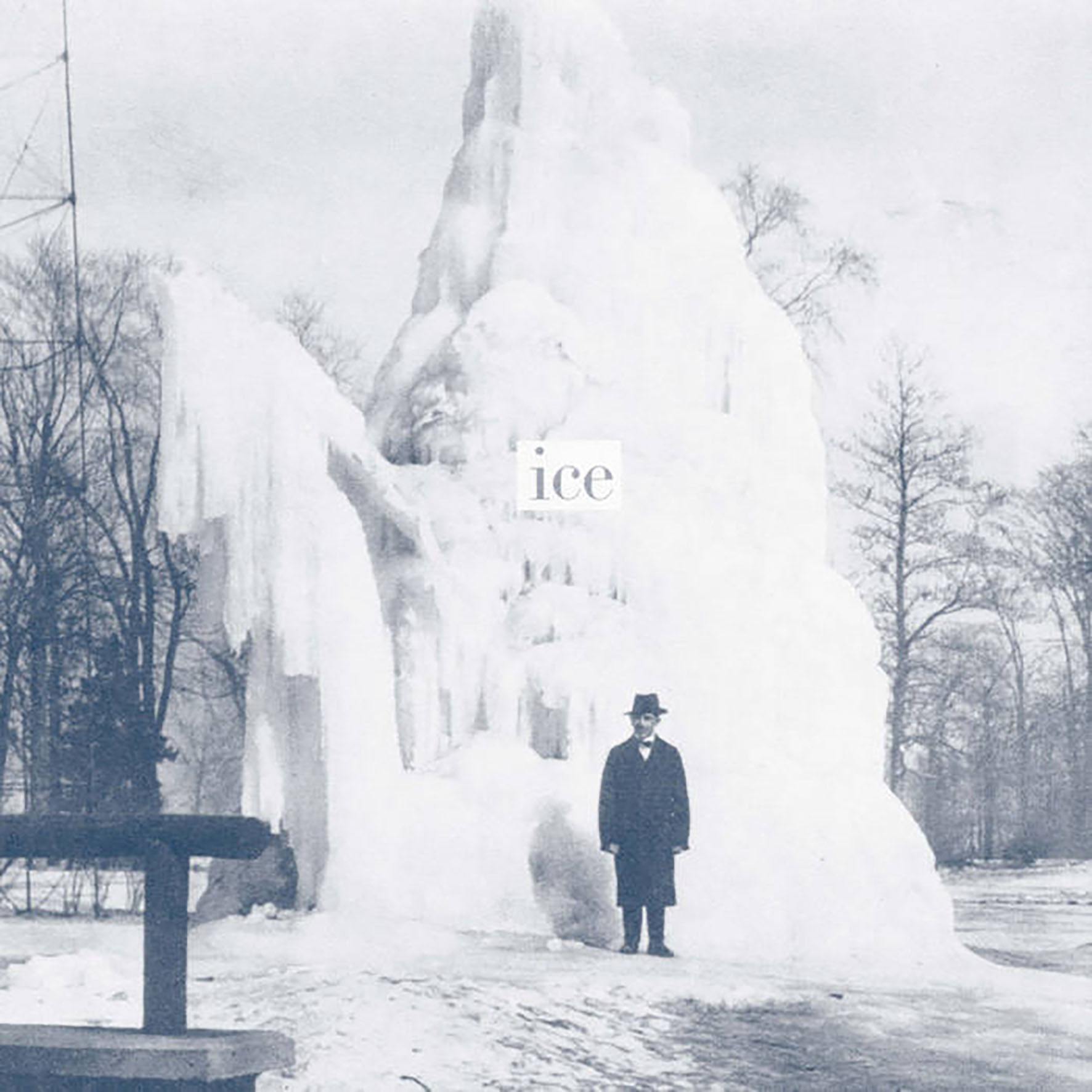 Back in 2008, Steve Roden quietly released one of my favorite ambient albums of all time in a signed limited edition of 250. Of course, I did not realize it at the time, so it took another decade or so before Stars of Ice finally made its way to my ears. Happily, however, Room40 has now reissued Roden's hauntingly beautiful collage of obscure and antique Christmas records, which will hopefully nudge many more receptive ears towards this modest, one-of-a-kind masterpiece. While I am sure I would have greatly enjoyed the original album if I had heard it when it was first released, it is worth noting that my appreciation for texture has evolved considerably over the years, so maybe Stars of Ice uncannily got to me at precisely the right time. In fact, I wonder how significant a role Roden himself has (indirectly) played in my shifting tastes, as he has always been ahead of his time in regard to celebrating details and nuances (as well as inventively repurposing "non-musical" sounds) and we seem to be in the midst of a textural renaissance at the moment. That said, most of Stars of Ice is as nakedly beautiful as music can get, so the quavering murkiness, crackling and popping vinyl, and pleasantly lapping waves of hiss are mere icing on an already gorgeous cake. This is an absolutely brilliant and magical album.
Back in 2008, Steve Roden quietly released one of my favorite ambient albums of all time in a signed limited edition of 250. Of course, I did not realize it at the time, so it took another decade or so before Stars of Ice finally made its way to my ears. Happily, however, Room40 has now reissued Roden's hauntingly beautiful collage of obscure and antique Christmas records, which will hopefully nudge many more receptive ears towards this modest, one-of-a-kind masterpiece. While I am sure I would have greatly enjoyed the original album if I had heard it when it was first released, it is worth noting that my appreciation for texture has evolved considerably over the years, so maybe Stars of Ice uncannily got to me at precisely the right time. In fact, I wonder how significant a role Roden himself has (indirectly) played in my shifting tastes, as he has always been ahead of his time in regard to celebrating details and nuances (as well as inventively repurposing "non-musical" sounds) and we seem to be in the midst of a textural renaissance at the moment. That said, most of Stars of Ice is as nakedly beautiful as music can get, so the quavering murkiness, crackling and popping vinyl, and pleasantly lapping waves of hiss are mere icing on an already gorgeous cake. This is an absolutely brilliant and magical album. 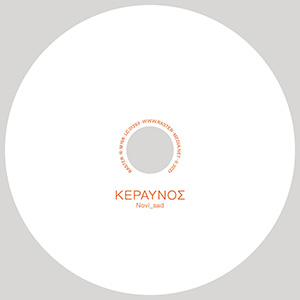 The title of the latest Novi_sad work roughly translates to lightning or thunder as related to Zeus and is a wonderfully fitting title for this album. Based on environmental sounds recorded on five different continents, Thanasis Kaproulias’s latest album is neither pure field recordings, nor is it the product of laborious processing and treatments. Instead it sits nestled somewhere between the two: some segments are clearly recordings of rainstorms or birds, but others are shaped into blasts of noise or melody, sometimes within the span of a few minutes, conjuring beauty and fear much in the way a thunderstorm does.
The title of the latest Novi_sad work roughly translates to lightning or thunder as related to Zeus and is a wonderfully fitting title for this album. Based on environmental sounds recorded on five different continents, Thanasis Kaproulias’s latest album is neither pure field recordings, nor is it the product of laborious processing and treatments. Instead it sits nestled somewhere between the two: some segments are clearly recordings of rainstorms or birds, but others are shaped into blasts of noise or melody, sometimes within the span of a few minutes, conjuring beauty and fear much in the way a thunderstorm does. Initially intended to be a lockdown project based around recycling (and re-recycling) of sound sources, Stephen Meixner (Contrastate) ended up shifting the theme of A Silent War to a very specific one. Based on the worldwide ripples of the murder of George Floyd at the hands of a police officer gave a specific theme to an otherwise conceptually defined record. Featuring contributions by the other members of Contrastate, Ralf Wehowsky, Steve Pittis (Band of Pain) and more, the final product is as enthralling as it is bleak and depressing.
Initially intended to be a lockdown project based around recycling (and re-recycling) of sound sources, Stephen Meixner (Contrastate) ended up shifting the theme of A Silent War to a very specific one. Based on the worldwide ripples of the murder of George Floyd at the hands of a police officer gave a specific theme to an otherwise conceptually defined record. Featuring contributions by the other members of Contrastate, Ralf Wehowsky, Steve Pittis (Band of Pain) and more, the final product is as enthralling as it is bleak and depressing. I am thrilled that Room40 is digging up and reissuing some woefully underheard gems from Steve Roden these days, as a hell of a lot of fascinating work passed me by in the pre-Bandcamp days of hyper-limited physical releases. Stars of Ice (due for a reissue in February) was especially revelatory for me, but this more modest initial dispatch from Roden's vaults is quite a treat as well. As far as I know, Oionos has not been released previously, yet it dates from a 2006 exhibition in Athens, Greece entitled The Grand Promenade. The premise of the exhibition was to create a "dialogue" between "contemporary site-specific works" and "various archaeological and historical sites in central Athens," but Roden fell in love with the Church of St. Dimitris Loumbardiardis (not among the planned sites) and managed to talk the curator into allowing an exception. Notably, the architect behind the church was the same man (Dimitris Pikionis) who designed the original promenade, so Roden's selection was a thoughtful and inspired decision, as he felt the path leading to the church provided a "stronger impression of Pikionis's vision" than the actual promenade (unlike the main promenade, the path to the church escaped being ‘restored’ in preparation for the 2004 Olympics).
I am thrilled that Room40 is digging up and reissuing some woefully underheard gems from Steve Roden these days, as a hell of a lot of fascinating work passed me by in the pre-Bandcamp days of hyper-limited physical releases. Stars of Ice (due for a reissue in February) was especially revelatory for me, but this more modest initial dispatch from Roden's vaults is quite a treat as well. As far as I know, Oionos has not been released previously, yet it dates from a 2006 exhibition in Athens, Greece entitled The Grand Promenade. The premise of the exhibition was to create a "dialogue" between "contemporary site-specific works" and "various archaeological and historical sites in central Athens," but Roden fell in love with the Church of St. Dimitris Loumbardiardis (not among the planned sites) and managed to talk the curator into allowing an exception. Notably, the architect behind the church was the same man (Dimitris Pikionis) who designed the original promenade, so Roden's selection was a thoughtful and inspired decision, as he felt the path leading to the church provided a "stronger impression of Pikionis's vision" than the actual promenade (unlike the main promenade, the path to the church escaped being ‘restored’ in preparation for the 2004 Olympics).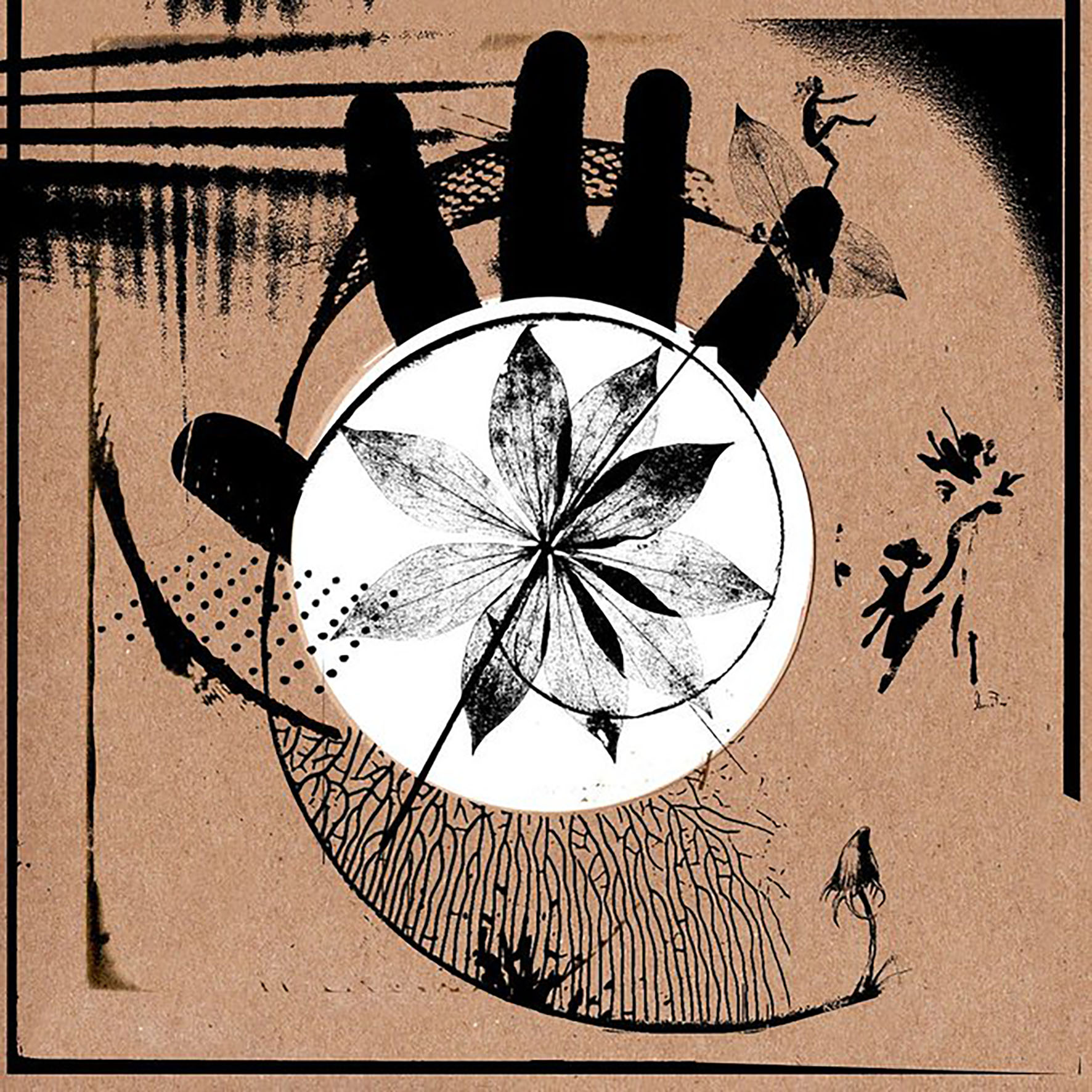 There are a number of fascinating small labels exploring unusual niches these days, which I suppose makes the current era something of a golden age for curious outsiders with deeply arcane interests. My favorite imprint in that vein is unsurprisingly the "open-ended research project exploring the vernacular arcana of Great Britain and beyond" that is Folklore Tapes, as their major releases exist on a plane all their own, elegantly and entertainingly blurring the lines between art, history, folklore, scholarship, music, poetry, visual art and whatever other compelling threads catch their fancy. This latest opus is characteristically another glorious cultural artifact, which is hardly surprising given the fertile nature of the subject. Nevertheless, the label have still outdone themselves, as Swifter than the Moon's Sphere celebrates the hidden history of fairy folk with an eclectic array of fairy-inspired spoken word pieces and sound art, as well as a deep and endearingly witty scholarly dive into fairy class structure and how shifting views of the supernatural mirror our society. In fact, this is one of the rare albums in which the liner notes (courtesy of Jez Winship) are every bit as compelling as the actual music ("there is something oddly impotent about the fairy aristocracy"). Beyond that, Swifter than the Moon's Sphere is a welcome return to familiar territory for the label, bringing together an inspired host of known, unknown, obscure, and enigmatic artists for a freewheeling tour de force of supernaturally charged and backwards-looking folk horror and rural psychedelia.
There are a number of fascinating small labels exploring unusual niches these days, which I suppose makes the current era something of a golden age for curious outsiders with deeply arcane interests. My favorite imprint in that vein is unsurprisingly the "open-ended research project exploring the vernacular arcana of Great Britain and beyond" that is Folklore Tapes, as their major releases exist on a plane all their own, elegantly and entertainingly blurring the lines between art, history, folklore, scholarship, music, poetry, visual art and whatever other compelling threads catch their fancy. This latest opus is characteristically another glorious cultural artifact, which is hardly surprising given the fertile nature of the subject. Nevertheless, the label have still outdone themselves, as Swifter than the Moon's Sphere celebrates the hidden history of fairy folk with an eclectic array of fairy-inspired spoken word pieces and sound art, as well as a deep and endearingly witty scholarly dive into fairy class structure and how shifting views of the supernatural mirror our society. In fact, this is one of the rare albums in which the liner notes (courtesy of Jez Winship) are every bit as compelling as the actual music ("there is something oddly impotent about the fairy aristocracy"). Beyond that, Swifter than the Moon's Sphere is a welcome return to familiar territory for the label, bringing together an inspired host of known, unknown, obscure, and enigmatic artists for a freewheeling tour de force of supernaturally charged and backwards-looking folk horror and rural psychedelia. Basque composer Elena Setién’s second album for Thrill Jockey is quite an unexpected leap forward from the more pop-minded Another Kind Of Revolution. While Setién's love of strong melodies and big hooks still remains mostly intact, Unfamilar Minds beautifully balances them with a host of more adventurous and psych-inspired touches, resulting in at least a half of a strikingly brilliant and unique album. The other half admittedly does not suffer from a lack of likable melodies or tight songcraft, yet Setién's work definitely needs a splash of darker, stranger sounds to curdle the wholesomeness of her more straightforward "pop" tendencies. It is an improbable and unusual mingling of stylistic threads evoking a revolving cast of seductive female vocalists getting remixed by a gnarled heavy psych project, yet Setién somehow makes it feel totally organic, natural, and all her own. Also, her throaty purr makes that unholy collision feel way more sensual and soulful than I would have expected. While it would admittedly be nice if I enjoyed the album's second half as much as the more warped and hallucinatory first half, that first half nevertheless feels enough like a revelation to make Unfamiliar Minds feel like some kind of minor masterpiece.
Basque composer Elena Setién’s second album for Thrill Jockey is quite an unexpected leap forward from the more pop-minded Another Kind Of Revolution. While Setién's love of strong melodies and big hooks still remains mostly intact, Unfamilar Minds beautifully balances them with a host of more adventurous and psych-inspired touches, resulting in at least a half of a strikingly brilliant and unique album. The other half admittedly does not suffer from a lack of likable melodies or tight songcraft, yet Setién's work definitely needs a splash of darker, stranger sounds to curdle the wholesomeness of her more straightforward "pop" tendencies. It is an improbable and unusual mingling of stylistic threads evoking a revolving cast of seductive female vocalists getting remixed by a gnarled heavy psych project, yet Setién somehow makes it feel totally organic, natural, and all her own. Also, her throaty purr makes that unholy collision feel way more sensual and soulful than I would have expected. While it would admittedly be nice if I enjoyed the album's second half as much as the more warped and hallucinatory first half, that first half nevertheless feels enough like a revelation to make Unfamiliar Minds feel like some kind of minor masterpiece. Hany Mehanna is a key figure in the development of keyboards in Asian music. As a young man he played accordion, organ, and synth in the orchestra of legendary singer Umm Kulthum and—along with Ammar Al-Sheriyi—learned to create quarter tones by using oscillators. In a later prolific period composing music for 93 films and 38 television series, Mehanna forged his own distinctive sound: a balance of traditional Arabic melody types or maqams and hypnotic experimental electronics. Remastered from his personal reel-to-reel tapes, this album showcases that balance on 19 otherworldly tracks. I like the fact I can never predict what any piece will sound like based on how it starts, even on very short tracks. Mehanna’s only other solo album, The Miracle Of The Seven Dances, was reissued in 2018 after being rediscovered in a record shop in Casablanca.
Hany Mehanna is a key figure in the development of keyboards in Asian music. As a young man he played accordion, organ, and synth in the orchestra of legendary singer Umm Kulthum and—along with Ammar Al-Sheriyi—learned to create quarter tones by using oscillators. In a later prolific period composing music for 93 films and 38 television series, Mehanna forged his own distinctive sound: a balance of traditional Arabic melody types or maqams and hypnotic experimental electronics. Remastered from his personal reel-to-reel tapes, this album showcases that balance on 19 otherworldly tracks. I like the fact I can never predict what any piece will sound like based on how it starts, even on very short tracks. Mehanna’s only other solo album, The Miracle Of The Seven Dances, was reissued in 2018 after being rediscovered in a record shop in Casablanca. Meitei’s plunderphonic exploration of “lost Japanese moods” has been an intriguing and unusual project right from the start, but it started to blossom into something truly great with 2019's Komachi and only got better with the beat-driven breakthrough of 2020's Kofū. As it turns out, that creative leap forward was also quite an intensely prolific period and a lot of tough cuts needed to made to distill the resultant mountain of songs into a single album. As I loved Kofū, I have no qualms at all with Meitei's ruthless culling choices for that album, but it did leave a lot of finished and semi-finished pieces on the cutting room floor (somewhere around 50, in fact) and many definitely deserved a far better fate. Meitei's original plan was to just keep moving forward with new material in the wake of Kofū's success, yet "when it came time to begin his next album, he found that it had been sitting in front of him all along" and "realized his work wasn’t over yet." In that regard, Meitei's judgment proves to be unerring once again, as this selection of Songs That Did Not Make The Original Cut is every bit as poignant, wonderful, and deliriously fun as its predecessor.
Meitei’s plunderphonic exploration of “lost Japanese moods” has been an intriguing and unusual project right from the start, but it started to blossom into something truly great with 2019's Komachi and only got better with the beat-driven breakthrough of 2020's Kofū. As it turns out, that creative leap forward was also quite an intensely prolific period and a lot of tough cuts needed to made to distill the resultant mountain of songs into a single album. As I loved Kofū, I have no qualms at all with Meitei's ruthless culling choices for that album, but it did leave a lot of finished and semi-finished pieces on the cutting room floor (somewhere around 50, in fact) and many definitely deserved a far better fate. Meitei's original plan was to just keep moving forward with new material in the wake of Kofū's success, yet "when it came time to begin his next album, he found that it had been sitting in front of him all along" and "realized his work wasn’t over yet." In that regard, Meitei's judgment proves to be unerring once again, as this selection of Songs That Did Not Make The Original Cut is every bit as poignant, wonderful, and deliriously fun as its predecessor. With two different releases in 2021, Jim Campbell (as Rrill Bell) follows up 2020's Ballad of the External Life going in two very different thematic directions. A cassette, False Flag Rapture, is a personal, intimate work based around a recording of his grandmother, while the digital (available with printed material as well) Blade’s Return is a narrative tale about a saw (I am not sure if it is truly meant to be anthropomorphic or not). Both feel rather different from each other, but both also feature the heavy tape manipulations of Campbell, reducing instrument recordings to raw material that he shapes into entirely different and unique forms.
With two different releases in 2021, Jim Campbell (as Rrill Bell) follows up 2020's Ballad of the External Life going in two very different thematic directions. A cassette, False Flag Rapture, is a personal, intimate work based around a recording of his grandmother, while the digital (available with printed material as well) Blade’s Return is a narrative tale about a saw (I am not sure if it is truly meant to be anthropomorphic or not). Both feel rather different from each other, but both also feature the heavy tape manipulations of Campbell, reducing instrument recordings to raw material that he shapes into entirely different and unique forms.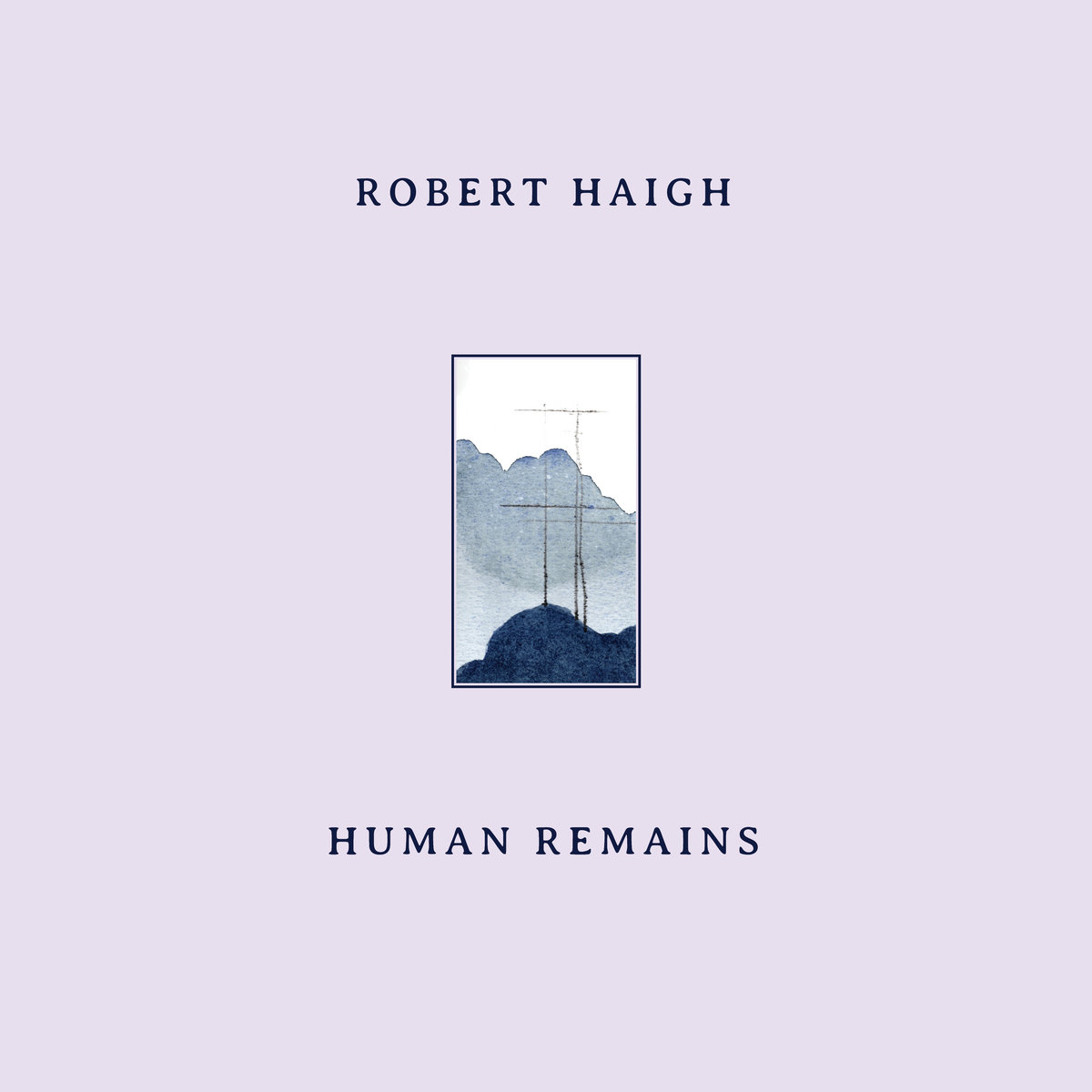 With apologies to Laurie Speigel after whose album the label takes its name (and Sylvia Tarozzi), it must be said that solo piano is at the core of Unseen Worlds. Their standards are high, as evidenced by recent releases such as James Rushford's Musicá Collada/See The Welter and "Blue" Gene Tyranny’s Detours. Human Remains is Robert Haigh’s third (and best) release for the label. His composition and playing superbly balance immediacy and detachment. This balance places a subtle disguise or mystery over these compositions. I detect a similarity with the approach of Werner Herzog in many of whose films the audience is allowed to feel and react without heavy-handed close ups.
With apologies to Laurie Speigel after whose album the label takes its name (and Sylvia Tarozzi), it must be said that solo piano is at the core of Unseen Worlds. Their standards are high, as evidenced by recent releases such as James Rushford's Musicá Collada/See The Welter and "Blue" Gene Tyranny’s Detours. Human Remains is Robert Haigh’s third (and best) release for the label. His composition and playing superbly balance immediacy and detachment. This balance places a subtle disguise or mystery over these compositions. I detect a similarity with the approach of Werner Herzog in many of whose films the audience is allowed to feel and react without heavy-handed close ups. Discovering this London-based composer's adventurously psychedelic collages of traditional Greek music was one of 2021's great musical pleasures for me, so I was very eager to hear this ambitious double album follow up to Antiqua Graecia. As expected, it is a characteristically wonderful and unusual release, but it is also marks a detour away from Stamou's impressive run of Greek-themed albums. The theme of the aptly titled Monoliths is instead Stamou's attempt to "collide" the two sides of his working methods: live performances and studio work. By my estimation, it was a very successful collision, but it was mostly a behind-the-scenes one, as I would be hard pressed to determine where one approach starts and another begins. As a result, the more immediate and striking theme of the album for me as a listener is that each piece feels like an extended experiment in crafting an immersive, complexly layered sound world from just a single recognizable instrument. At least, that is how Monoliths unfolds for its first half, as the bottom drops out of the album's hallucinatory feast of bells, organs, and steel drums to reveal a considerably more processed, abstract, and psychotropic second hour of drone-damaged mindfuckery. That approach admittedly makes Monoliths a bit less accessible than some of Stamou’s more conventionally melodic work, but serious heads looking for a deep and sustained dive into otherworldly psych meditations will likely love this immersive tour de force.
Discovering this London-based composer's adventurously psychedelic collages of traditional Greek music was one of 2021's great musical pleasures for me, so I was very eager to hear this ambitious double album follow up to Antiqua Graecia. As expected, it is a characteristically wonderful and unusual release, but it is also marks a detour away from Stamou's impressive run of Greek-themed albums. The theme of the aptly titled Monoliths is instead Stamou's attempt to "collide" the two sides of his working methods: live performances and studio work. By my estimation, it was a very successful collision, but it was mostly a behind-the-scenes one, as I would be hard pressed to determine where one approach starts and another begins. As a result, the more immediate and striking theme of the album for me as a listener is that each piece feels like an extended experiment in crafting an immersive, complexly layered sound world from just a single recognizable instrument. At least, that is how Monoliths unfolds for its first half, as the bottom drops out of the album's hallucinatory feast of bells, organs, and steel drums to reveal a considerably more processed, abstract, and psychotropic second hour of drone-damaged mindfuckery. That approach admittedly makes Monoliths a bit less accessible than some of Stamou’s more conventionally melodic work, but serious heads looking for a deep and sustained dive into otherworldly psych meditations will likely love this immersive tour de force.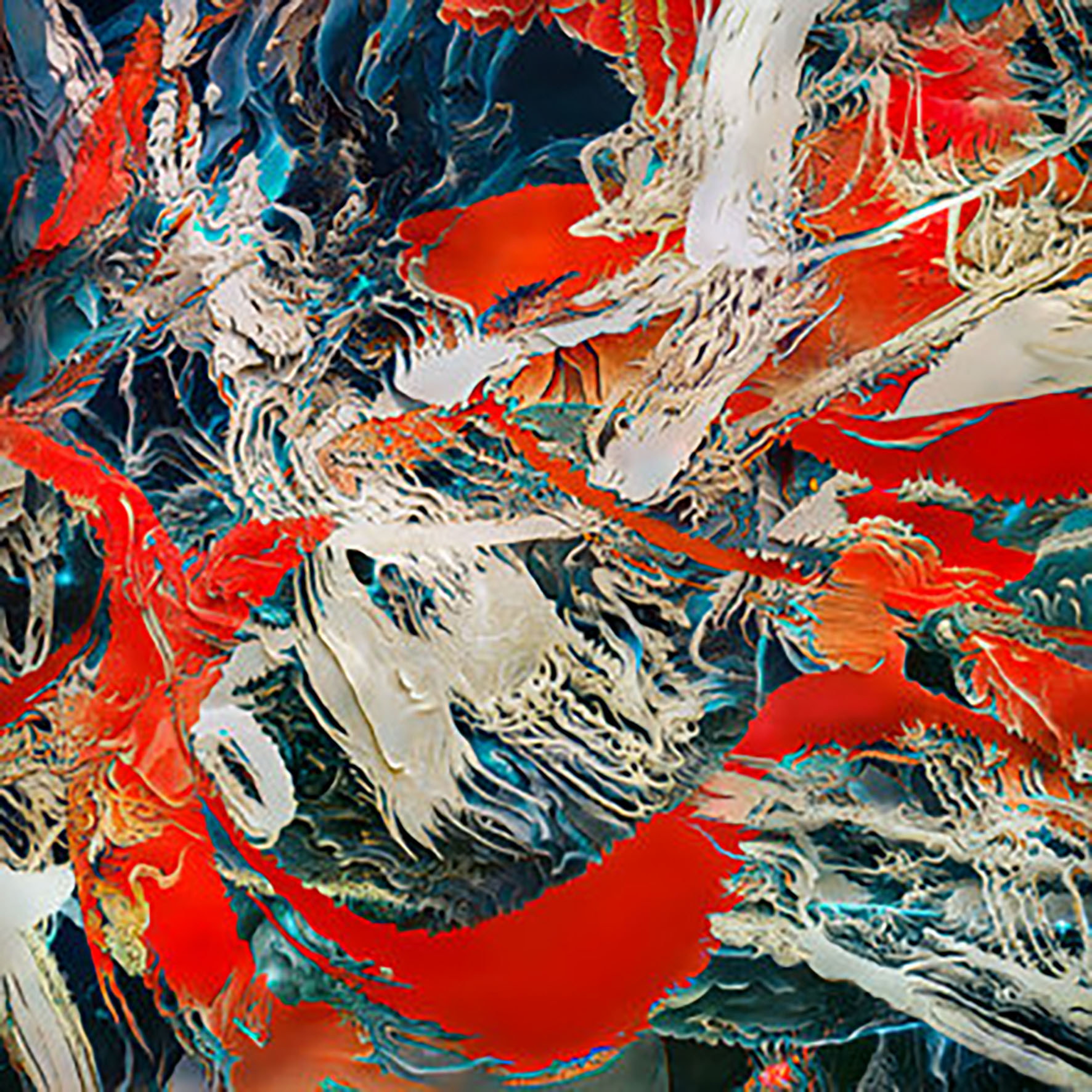 At this point, I consider myself quite well accustomed to Markus Popp's penchant for bold stylistic reinventions, yet this latest album managed to completely blindside me nevertheless. To be fair, however, Ovidono is not quite a pure Oval album, as Popp is joined by return collaborator Eriko Toyoda and artist/actress Vlatka Alec. The latter, in fact, is responsible for the album's concept: transforming the poetry of Ovid and Ono No Komachi into sound art that evokes "the tactile, immersive quality and intimacy of ASMR." The trio definitely succeeded in that regard, as Ovidono is probably the finest ASMR-inspired album that I have yet heard, but it is also a bit more ambitious than just a hallucinatory swirl of hushed and sibilant voices. Obviously, that would have been just fine by me too, as Popp is an absolute wizard at chopping and reassembling sounds. However, Ovidono is also quite compelling compositionally, as Alec and Toyoda's voices are backed by music that lies somewhere between noirish torch song, deconstructed piano jazz, and the uneasy dissonances of Morton Feldman.
At this point, I consider myself quite well accustomed to Markus Popp's penchant for bold stylistic reinventions, yet this latest album managed to completely blindside me nevertheless. To be fair, however, Ovidono is not quite a pure Oval album, as Popp is joined by return collaborator Eriko Toyoda and artist/actress Vlatka Alec. The latter, in fact, is responsible for the album's concept: transforming the poetry of Ovid and Ono No Komachi into sound art that evokes "the tactile, immersive quality and intimacy of ASMR." The trio definitely succeeded in that regard, as Ovidono is probably the finest ASMR-inspired album that I have yet heard, but it is also a bit more ambitious than just a hallucinatory swirl of hushed and sibilant voices. Obviously, that would have been just fine by me too, as Popp is an absolute wizard at chopping and reassembling sounds. However, Ovidono is also quite compelling compositionally, as Alec and Toyoda's voices are backed by music that lies somewhere between noirish torch song, deconstructed piano jazz, and the uneasy dissonances of Morton Feldman.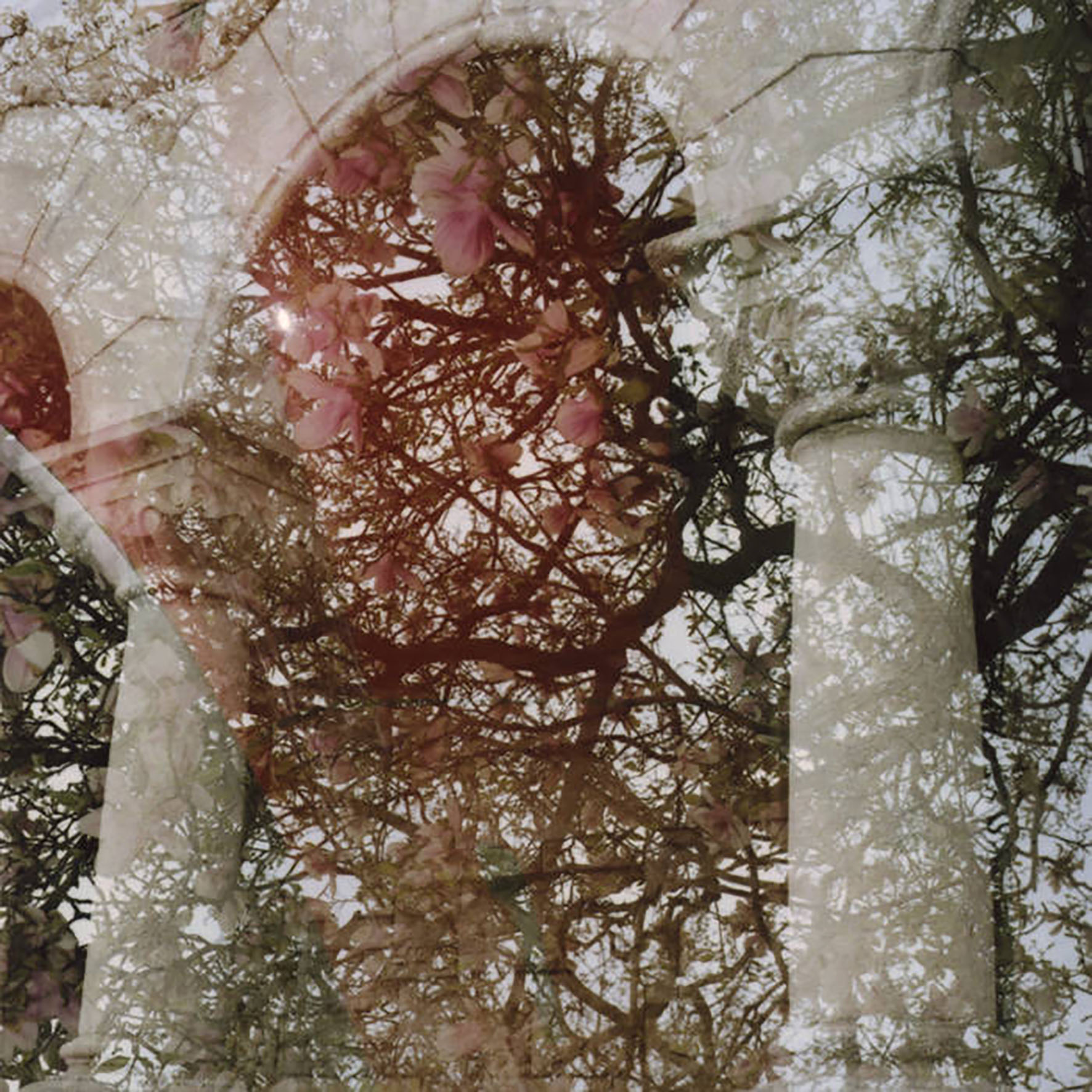 This lovely and unexpected collaboration was quietly released digitally in November with no background information provided at all, but it is probably safe to say that it was recorded quite recently, as it shares a lot of common ground with the radiant drones of Growing's Diptych (2021). That, of course, also means that Gainer can sometimes feel like a welcome throwback to "classic Kranky" era drone artists like Stars of the Lid, though each piece ultimately blossoms into something more ambitious and distinctive by the end. That drone-heavy aesthetic sometimes makes figuring out where Lattimore fits in quite a challenge, as recognizable harp sounds are a bit of a rarity amidst the smoldering bass thrum and ambient shimmer. Then again, recognizable guitar and bass sounds are not exactly rampant either, so maybe all three artists opted for elegantly blurred impressionist abstraction. In any case, whatever they did worked quite well, as Lattimore and Growing's two aesthetics bleed together quite nicely and often feel like something greater than the mere sum of their parts (or at least like a very good Growing album beautifully enhanced with subtle acoustic shadings and flickers of melody).
This lovely and unexpected collaboration was quietly released digitally in November with no background information provided at all, but it is probably safe to say that it was recorded quite recently, as it shares a lot of common ground with the radiant drones of Growing's Diptych (2021). That, of course, also means that Gainer can sometimes feel like a welcome throwback to "classic Kranky" era drone artists like Stars of the Lid, though each piece ultimately blossoms into something more ambitious and distinctive by the end. That drone-heavy aesthetic sometimes makes figuring out where Lattimore fits in quite a challenge, as recognizable harp sounds are a bit of a rarity amidst the smoldering bass thrum and ambient shimmer. Then again, recognizable guitar and bass sounds are not exactly rampant either, so maybe all three artists opted for elegantly blurred impressionist abstraction. In any case, whatever they did worked quite well, as Lattimore and Growing's two aesthetics bleed together quite nicely and often feel like something greater than the mere sum of their parts (or at least like a very good Growing album beautifully enhanced with subtle acoustic shadings and flickers of melody).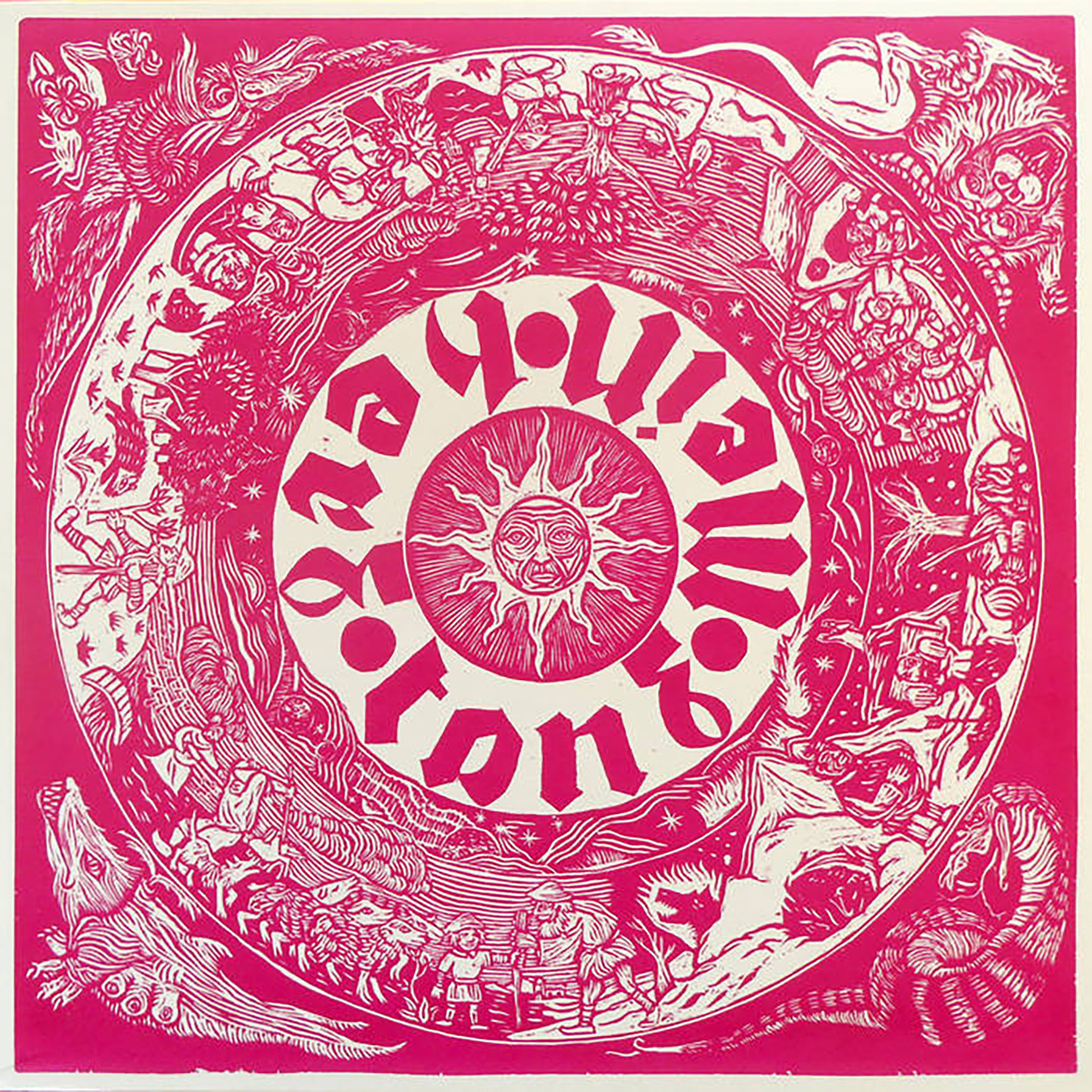 I began 2021 not knowing a single goddamn thing about Jeremie Sauvage, the Standard In-Fi label, or France's fascinating Auvergnat/avant-folk milieu, but I am certainly ending the year as a somewhat obsessed fan. Weirdly, this year was not an especially prolific year for the milieu, though Yann Gourdon and Sourdure had fresh releases, yet this album, the Sourdure album, and a pair of France reissues seemed to reach a lot more ears than usual and two of those ears were mine. The linguistically astute may successfully deduce that Quattro is Tanz Mein Herz's fourth album, but details beyond that are minimal and the recordings actually date from a two-day "public recording session" back in 2016 (the band's entire discography seems to have been recorded between 2014 and 2016, in fact). There is also some poetic information provided in French that makes repeated references to drones, vibrations, resonance, infinity, suspension, immensity, and a "pendulum of dreams," which I found both apt and predictably alluring. Admittedly, many of those descriptors could also apply to a host of disappointing drone albums, but I suspect the "pendulum of dreams" bit is probably the secret ingredient that makes this particular album so transcendent. That said, Quattro can also be quite challenging at times, but it unquestionably captures a very unusual acoustic drone ensemble at the very height of their eclectic and hypnotic powers, so it invariably winds up somewhere compelling no matter how prickly the voyage may become along the way.
I began 2021 not knowing a single goddamn thing about Jeremie Sauvage, the Standard In-Fi label, or France's fascinating Auvergnat/avant-folk milieu, but I am certainly ending the year as a somewhat obsessed fan. Weirdly, this year was not an especially prolific year for the milieu, though Yann Gourdon and Sourdure had fresh releases, yet this album, the Sourdure album, and a pair of France reissues seemed to reach a lot more ears than usual and two of those ears were mine. The linguistically astute may successfully deduce that Quattro is Tanz Mein Herz's fourth album, but details beyond that are minimal and the recordings actually date from a two-day "public recording session" back in 2016 (the band's entire discography seems to have been recorded between 2014 and 2016, in fact). There is also some poetic information provided in French that makes repeated references to drones, vibrations, resonance, infinity, suspension, immensity, and a "pendulum of dreams," which I found both apt and predictably alluring. Admittedly, many of those descriptors could also apply to a host of disappointing drone albums, but I suspect the "pendulum of dreams" bit is probably the secret ingredient that makes this particular album so transcendent. That said, Quattro can also be quite challenging at times, but it unquestionably captures a very unusual acoustic drone ensemble at the very height of their eclectic and hypnotic powers, so it invariably winds up somewhere compelling no matter how prickly the voyage may become along the way. Klara Lewis has been a unique and consistently interesting artist ever since she first surfaced, but 2020's Ingrid felt like a massive breakthrough and just about everything that she has released since has been stellar (live albums included). Unsurprisingly, Live in Montreal 2018 does nothing to derail that streak, but there are a couple of somewhat big surprises with it too. The first one is the date of the performance, as I had no idea that Lewis was on this plane two years before Ingrid came along. That is not to say that Live in Montreal would have necessarily eclipsed 2016's excellent Too had it been the follow up, but the Lewis of 2016 was an artist who seemed categorically disinterested in doing anything the conventional/expected way. And the comparative melodicism of 2018's fitfully great collaboration with Simon Fisher Turner (Care) felt like a one-off experiment in applying her non-musical found sounds to a more traditionally musical vision rather than a change in direction. As it turns out, however, Care was merely a tease of greater things to come and the lucky attendees of this performance got a sneak preview of those greater things long before the rest of us. The second big surprise is that this album is composed of seemingly all new material rather than variations on Lewis's existing work—it feels aesthetically akin to a proto-Ingrid, but a stage before that piece was distilled to just a single perfect motif. Obviously, that narrowing of focus yielded great results, but this more varied and shapeshifting approach yielded some legitimately great results too, elegantly blurring the lines between drone, noise, spacy synth explorations, and pop plunderphonics.
Klara Lewis has been a unique and consistently interesting artist ever since she first surfaced, but 2020's Ingrid felt like a massive breakthrough and just about everything that she has released since has been stellar (live albums included). Unsurprisingly, Live in Montreal 2018 does nothing to derail that streak, but there are a couple of somewhat big surprises with it too. The first one is the date of the performance, as I had no idea that Lewis was on this plane two years before Ingrid came along. That is not to say that Live in Montreal would have necessarily eclipsed 2016's excellent Too had it been the follow up, but the Lewis of 2016 was an artist who seemed categorically disinterested in doing anything the conventional/expected way. And the comparative melodicism of 2018's fitfully great collaboration with Simon Fisher Turner (Care) felt like a one-off experiment in applying her non-musical found sounds to a more traditionally musical vision rather than a change in direction. As it turns out, however, Care was merely a tease of greater things to come and the lucky attendees of this performance got a sneak preview of those greater things long before the rest of us. The second big surprise is that this album is composed of seemingly all new material rather than variations on Lewis's existing work—it feels aesthetically akin to a proto-Ingrid, but a stage before that piece was distilled to just a single perfect motif. Obviously, that narrowing of focus yielded great results, but this more varied and shapeshifting approach yielded some legitimately great results too, elegantly blurring the lines between drone, noise, spacy synth explorations, and pop plunderphonics.